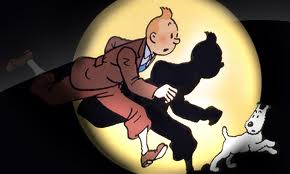Comprehension Through Comics
The best way to learn a foreign language is to speak it. How many times have you heard that one? If it’s as many times as I have then you’re probably wondering, “Why aren’t my language skills getting as strong as my jaw muscles from all this talking?” That’s because talking and listening are only two slices of the language acquisition pie, the missing wedge of that pie is—you guessed it—reading. These days it’s difficult to get most people motivated to read anything longer than a tweet (though I suspect if you are reading this blog post, you probably don’t have that problem), but if you’re learning a language, reading is a must.
While speaking practice does serve many purposes, motivation, fluency, and exposing gaps in your vocabulary and grammar skills, approaching your studies with a conversation-over-literacy attitude is like trying to drive a car with no tires: you’ll get nowhere fast. The truth is, speaking and reading have a symbiotic relationship that results in you becoming a language dynamo. When you speak in a foreign language, you give yourself the gift of fluency. When you read in a foreign language, you give yourself something in which to be fluent. Through reading, you can learn new words and grammar structures that you can use to better express your thoughts vocally.
Once you decide to crack open a book in the name of language acquisition, a new problem presents itself: what to read? I have a few suggestions, but the one we’ll talk about today is comics.
Holy bound books, Batman! You mean comics can help me gain language skills? Indeed I do. Either in their periodical format as comic books, or in the form of stand-alone graphic novels, reading stories told through sequential art can aid comprehension and give students who may not be ready to read a text novel a middle step with which to gain confidence and a sense of accomplishment.
How can comics and graphic novels help me learn a language if there’s minimal text to be read? I’m glad you asked. Because the text is so limited, there’s less  descriptions of setting—we don’t really need this with comics anyway since we can see what’s going on—and the the focus gets put on plot and dialog. No better way to learn grammar structures than to read something that consists of mainly dialog, and there’s no better way to stay interested in that dialog than if it’s about something you find stimulating rather than the usual, dry dialog found in language texts.
descriptions of setting—we don’t really need this with comics anyway since we can see what’s going on—and the the focus gets put on plot and dialog. No better way to learn grammar structures than to read something that consists of mainly dialog, and there’s no better way to stay interested in that dialog than if it’s about something you find stimulating rather than the usual, dry dialog found in language texts.
People often say a picture is worth a thousand words; it’s worth stating that illustrations are also pretty valuable and can net you a few comprehension clues. True language acquisition happens when words are connected to meanings and not just parroted back to the teacher. Comics help with this. Whereas with an all-text novel a student may consult a dictionary more often than they’d like, a pictorial representation of the scene taking place may make the reader feel more comfortable inferring the meaning of an unknown word. When that educated guess is confirmed as comprehension, the reader gains motivation and confidence which, let’s be honest here, are driving forces to language learning success. So get out there and find a comic or graphic novel you like in a language you love and start reading!
Are you already a reader of comics? If so, which is your favorite? If not, why not?
